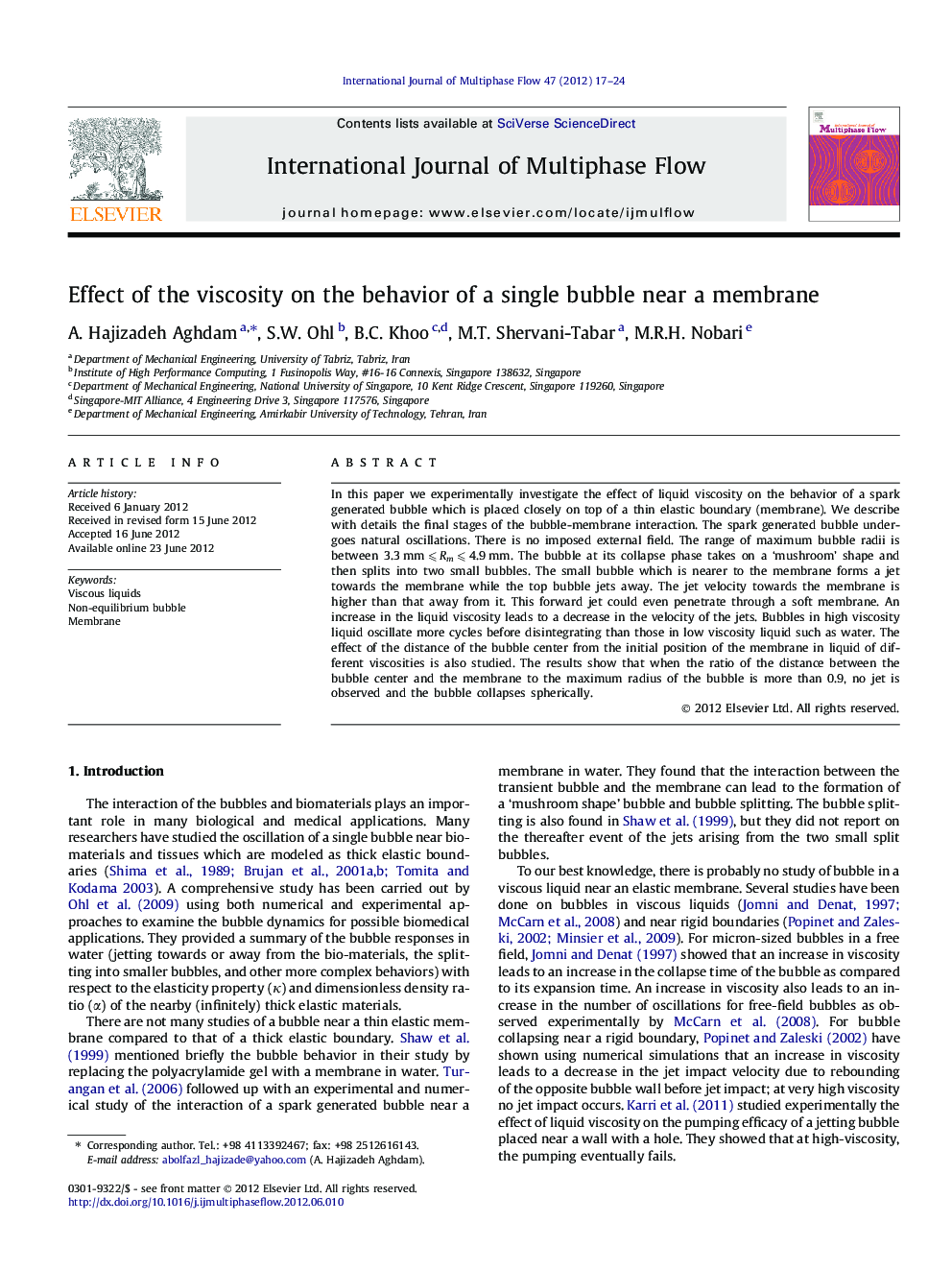| Article ID | Journal | Published Year | Pages | File Type |
|---|---|---|---|---|
| 667728 | International Journal of Multiphase Flow | 2012 | 8 Pages |
In this paper we experimentally investigate the effect of liquid viscosity on the behavior of a spark generated bubble which is placed closely on top of a thin elastic boundary (membrane). We describe with details the final stages of the bubble-membrane interaction. The spark generated bubble undergoes natural oscillations. There is no imposed external field. The range of maximum bubble radii is between 3.3 mm ⩽ Rm ⩽ 4.9 mm. The bubble at its collapse phase takes on a ‘mushroom’ shape and then splits into two small bubbles. The small bubble which is nearer to the membrane forms a jet towards the membrane while the top bubble jets away. The jet velocity towards the membrane is higher than that away from it. This forward jet could even penetrate through a soft membrane. An increase in the liquid viscosity leads to a decrease in the velocity of the jets. Bubbles in high viscosity liquid oscillate more cycles before disintegrating than those in low viscosity liquid such as water. The effect of the distance of the bubble center from the initial position of the membrane in liquid of different viscosities is also studied. The results show that when the ratio of the distance between the bubble center and the membrane to the maximum radius of the bubble is more than 0.9, no jet is observed and the bubble collapses spherically.
► Interaction of a spark-generated bubble and a membrane in viscous liquids. ► The bubble splits to two small bubbles that collapse with jets away from each other. ► The velocity of the jet towards the membrane is more than the one away from it. ► Increasing the liquid viscosity will decrease the velocity of the jets. ► Next to a soft membrane, the jet towards it can penetrate the membrane surface.
